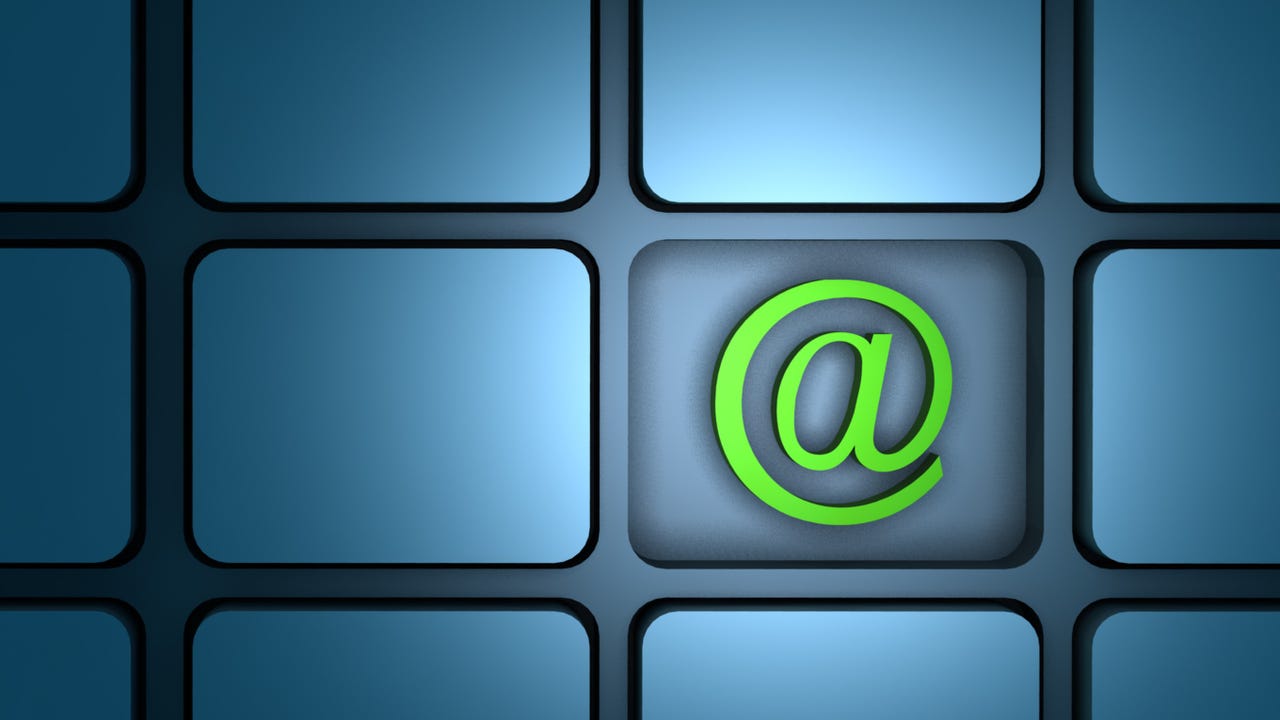
































For those who prefer a single email account, the answer is ... aliases.
Getty ImagesWelcome to the latest installment of?Ask ZDNet, where we know that the answer to every question isn't "Have you tried turning it off and back on again?"
In the mailbag this week: What's the best way to filter out marketing mail, newsletters, and other clutter without using a separate email account?
For those who missed the earlier Ask ZDNet column, here's a quick refresher: "I'm drowning in spam! How do I make it stop?"
Are you ready to use a professional address and exert control over your business communications? Then you'll want to sign up with an email hosting provider.
Read nowAnd, yes, we understand the desire to keep things simple. For those who prefer a single email account, the answer is ... aliases.
An alias is an alternate email address that is different from your "real" one but is still associated with your account and deposits messages sent to that alias into your regular inbox, without forwarding. Combining an alias with filters or rules lets you automatically move messages out of your inbox to a folder of your choosing as a way to manage less important email traffic.
Gmail has the most limited approach to aliases, which are based on your primary address. To create an alias on the fly, just put a plus sign at the end and tack on whatever you want as a suffix. If your address is[email protected], for example, you could use[email protected]as the address for subscribing to email newsletters. Then create a filter that applies the Newsletter label and skips the Inbox. Marie Kondo would be proud.
One problem with Gmail's plus-sign aliases is that they give away your primary address. A spammer can just strip away the plus sign and everything after and begin cluttering up your inbox.
A free Outlook.com account has much more versatile alias options. You can create up to 10 aliases that don't have to have any connection to your primary address. (Go to https://account.live.com/names/manage and sign in with your Microsoft account to create a new alias or remove an existing one.) Messages sent to an alias arrive in the same inbox as those sent to the primary email address and can be moved out of the Inbox and into custom folders using Outlook rules. If you're getting too much spam at an alias, you can delete it (and open up a slot for a new one). Any email sent to a deleted alias gets bounced back to the sender and is never forwarded.
If neither of those options is attractive, consider usingSimpleLogin , an open-source alternative that lets you create aliases that can be associated with any mailbox. (If you run your own mail server, you can even self-host the software.) The free Simple Login plan allows up to 15 aliases for one mailbox. Upgrading to the Premium plan for$4 a month (or$30 a year) unlocks unlimited aliases, unlimited mailboxes, unlimited custom domains, and PGP encryption.
Send your questions to [email protected]. Due to the volume of submissions, we can't guarantee a personal reply, but we do promise to read every letter and respond right here to the ones that we think our readers will care about. Be sure to include a working email address in case we have follow-up questions. We promise not to use it for any other purpose.
 Tags chauds:
Notre processus
Maison & bureau
Vie professionnelle
productivité
Tags chauds:
Notre processus
Maison & bureau
Vie professionnelle
productivité